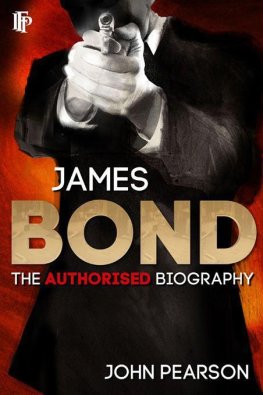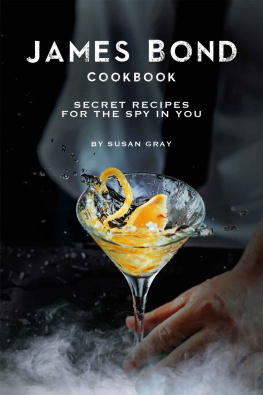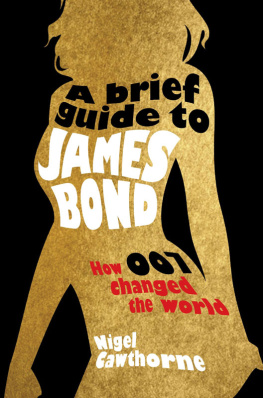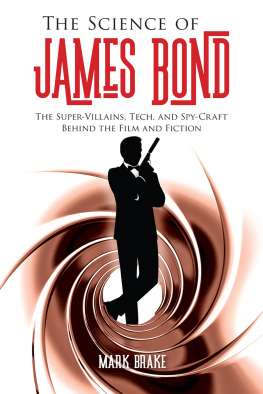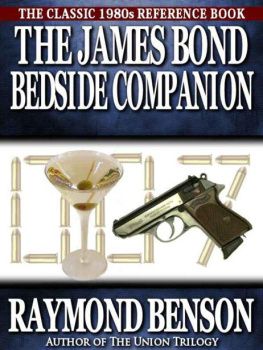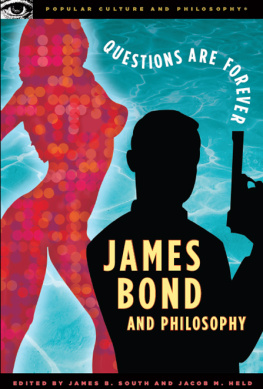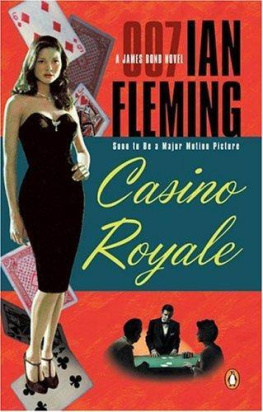Other Titles in the Smart Pop Series
Taking the Red Pill
Seven Seasons of Buffy
Five Seasons of Angel
What Would Sipowicz Do?
Stepping through the Stargate
The Anthology at the End of the Universe
Finding Serenity
The War of the Worlds
Alias Assumed
Navigating the Golden Compass
Farscape Forever!
Flirting with Pride and Prejudice
Revisiting Narnia
Totally Charmed
King Kong Is Back!
Mapping the World of Harry Potter
The Psychology of The Simpsons
The Unauthorized X-Men
The Man from Krypton
Welcome to Wisteria Lane
The Battle for Azeroth
Star Wars on Trial
Boarding the Enterprise
Getting Lost
www.smartpopbooks.com
JAMES
BOND
IN THE 21ST CENTURY

This publication has not been prepared, approved, or licensed by any entity that created or produced the popular James Bond books or films.
Can the Cinematic Bond Ever Be the Literary Bond? Copyright 2006 by Raymond Benson
The Sexual Subtext of 007 Copyright 2006 by John Cox
Bland... James Bland Copyright 2006 by Lee Pfeiffer
The Spy Who Would Not Die Copyright 2006 by Mark W. Tiedemann
Bonding... by the Numbers Copyright 2006 by Ray Dempsey
DONT PRESS THAT BUTTON! Copyright 2006 by JA Konrath
My Name Is Coochie McPantsless, Whats Yours? Copyright 2006 by Erin Dailey and Harry Elliott
If I Were a Villain, But Then Again, No Copyright 2006 by Steven Rubio
Daltons Gang Copyright 2006 by Michael Marano
Chinks in the Armor Copyright 2006 by Lawrence Watt-Evans
Agent 007 Performance Review Copyright 2006 by Natasha Giardina
So You Want to Be an Evil Genius Copyright 2006 by David Morefield
I knew Julius No... Copyright 2006 by Raelynn Hillhouse
Why Do We Still Want to Be James Bond? and interludes Copyright 2006 by Andrea Carlo Cappi
Nobody Does It Better Copyright 2006 by Louis Markos
An Englishmans Word Is His Bond Copyright 2006 by Adam Roberts
Covalent Bonds Copyright 2006 by Sarah Zettel
James Bond: Now More Than Ever Copyright 2006 by Bruce Bethke
Additional Materials Copyright BenBella Books
All rights reserved. No part of this book may be used or reproduced in any manner whatsoever without written permission except in the case of brief quotations embodied in critical articles or reviews.

BenBella Books, Inc.
6440 N. Central Expressway, Suite 617
Dallas, TX 75206
www.benbellabooks.com
Send feedback to
10 9 8 7 6 5 4 3 2 1
Library of Congress Cataloging-in-Publication Data
James Bond in the 21st century : why we still need 007 / edited by Glenn Yeffeth, with Leah Wilson.
p. cm.
ISBN 978-1-9352-5158-3
1. James Bond films--History and criticism. 2. Bond, James (Fictitious character) I. Yeffeth, Glenn, 1961-II. Wilson, Leah.
PN1995.9.J3J36 2006
791.4375dc22
2006015748
Proofreading by Stacia Seaman and Zachary Settle
Cover design by Todd Michael Bushman
Text design and composition by John Reinhardt Book Design
Printed by Victor Graphics, Inc.
Distributed by Independent Publishers Group
To order call (800) 888-4741
www.ipgbook.com
For media inquiries and special sales contact Yara Abuata at
Contents
THE REAL
JAMES BOND
J AMES BOND IS NOT a nice guy. Hes often irritable and broods a great deal about his life and profession. Bond drinks too much, smokes too much, gambles too much, and treats women cold-heartedly and ruthlessly. He keeps to himself most of the time but overly indulges in the sensory pleasures that food, drink, tobacco, and sex give him because he knows that on any given day he may no longer be alive. Bond is good looking, but in a cold, cruel way, and he has a scar down his right cheek. He has no taste in art, music, theater, or film. Other than newspapers, whatever he reads is usually for his workmanuals on self-defense and the likealthough hes been known to pick up an old Eric Ambler thriller for plane trips. Hes painfully set in his ways, looks at the world with cynicism, has relatively no sense of humor, and can claim very few friends.
Not the image of James Bond you usually imagine? Unless youve read the original Ian Fleming novels then thats most likely the case, for this is a fairly accurate description of the character as depicted in the books.
Its no wonder that Ian Fleming found it very difficult for his literary creation to make the transition from the page to the silver screen. For nearly ten years, the author was concerned that James Bond might not become a film commodity at all.
The Long Road to the Big Film Deal
Ever since the first novel, Casino Royale, was published in the United Kingdom in 1953 (and in the United States in 1954), Fleming always envisioned a movie version of 007. Despite early sales of film rights and nibbles from Hollywood throughout the rest of that decade, however, the big movie deal eluded the author.
The first important early sale went to CBS television in 1954, shortly after the publication of the novel in America. The rights were sold to make a one-hour adaptation for the networks Climax!, a dramatic series of mystery and suspense adaptations taped live in the studio. Broadcast in October of that year, Casino Royale starred Barry Nelson as American Jimmy Bond, Peter Lorre as the villain Le Chiffre, and Linda Christian as the first Bond girl, Vesper Lynd. Needless to say, Nelsons television character had little to do with Flemings literary creation other than he liked martinis and was an excellent card sharp. The teleplay, however, faithfully followed the novels plot, albeit toned down for American audiences and the network censors.
Producer Gregory Ratoff bought the feature motion picture rights to Casino Royale in 1955 but did nothing with the property, sitting on it until his death in 1960. Ratoffs widow promptly sold the rights to Hollywood agent-turned-producer Charles K. Feldman, who also left the property undeveloped until late in the 60s, after the official film series produced by EON Productions had been underway for five years and was a runaway success. Casino Royale finally made it to the screen in 1967, but very little about it had much to do with Ian Flemings original creation. Feldman, capitalizing on his 1965 mod comedy hit Whats New, Pussycat? and fearing that he couldnt compete with the EON series, decided to make Casino Royale as a spoof of Bond and spy movies in general. The likes of Peter Sellers, David Niven, Woody Allen, Orson Welles, Ursula Andress, and Joanna Pettet starred in the picture, which critics and fans found to be a complete mess. It was neither funny nor coherent. It did, however, sport a lively and popular score by Burt Bacharach. But a Bond movie it wasnt.
A little later in 1955, Fleming sold the film rights to his third Bond novel, Moonraker, to the Rank Organization. Once again, the film company did nothing with the property, and Fleming eventually bought the rights back in 1959. The author was learning that the motion picture business was not an easy nut to crack.
Fleming toyed with other film possibilities during the 50s. During the summer of 1956 he was approached by NBC to develop a television series provisionally called Commander Jamaica. It was to be an adventure program filmed in the Caribbean, the authors stomping grounds and often a location for Bond stories, except that the main character was to be named James Gunn. Fleming wrote a treatment for the pilot but the project fell apart by the end of the year. Instead, Fleming used the basic plot of the treatment for his next 007 novel,
Next page

